How a mum of two gets her kids to eat their veg
Kelly Ryan easily sways her two young children - aged two and five - to eat all their vegetables. See the easy steps you can take to get your kids to eat their superfoods.
Health of the Nation
Don't miss out on the headlines from Health of the Nation. Followed categories will be added to My News.
An apple a day keeps the doctor away. But in truth, an orange has more nutritional benefits. And when it comes to beans, broccoli is vastly superior.
These are just some of the small healthy food trades you can make to bolster your diet.
Consultant nutritionist at FoodWatch.com.au Catherine Saxelby said there was no formal definition for superfoods but they were often fresh or minimally processed items that had considerably more vitamins, minerals etc than their kilojoule count.
“All fruit is nutritional and variety is important but berries standout. I think eating an orange is better than eating an apple. Oranges have 10 times the amount of vitamin C and beta carotene than an apple and 40 times more folate, which is a vitamin B that helps prevent birth defects,” Ms Sexelby said.
“Broccoli is nutritionally superior to beans and other green vegetables.”
University of NSW nutritionist Dr Rosemary Stanton said while superfoods were important, she stressed they were not “saviours” of eating a poor, junk food heavy diet.
“We need our (diet) to include lots of variety in our choice of vegetables, fruits, nuts, seeds, legumes and wholegrains,” Dr Stanton said.
“Adding (superfoods) to a poor diet won’t undo the damage from too much sugar or salt or unhealthy fat.
“No single superfood will cure cancer but if you’re having a healthy diet, it will reduce your risk.”
‘HOW I GET MY KIDS TO EAT SUPERFOODS’
Kelly Ryan’s children enjoy the best of both worlds — superfoods and the occasional junk food splurge.
The mother of two, from Sydney, said most of her fridge was filled with local, fresh produce and her kids, aged two and five, were good at eating their vegetables.
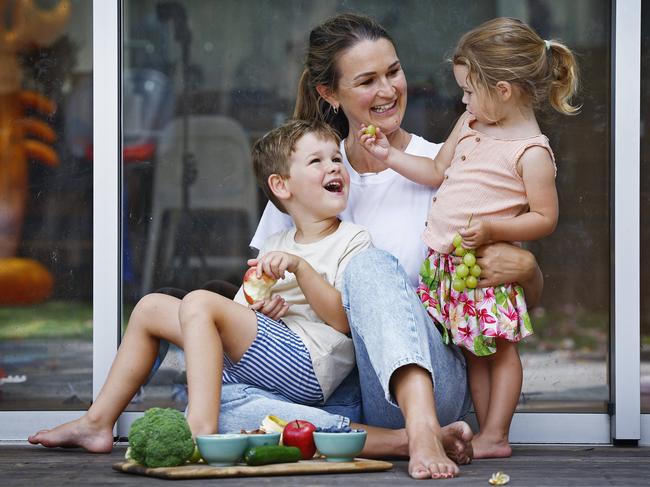
Sitting proudly on the family’s fridge is a chart that shows vegetables should make up 50 per cent of their dinner plate, with protein accounting for 25 per cent, complex carbs 15 per cent and fats 10 per cent.
“It all needs to be as good as it can be because there is plenty of ‘fun foods’ at birthday parties and events,” she said.
“We encourage them to eat slowly, stop when they are 80 per cent full. We have minimally processed food and get as local and fresh as we can.
“They eat frozen blueberries for dessert after dinner each night.”
She said smoothies were a great way for her to pack in extra superfoods for herself and her children, and often made chicken balls with grated carrot, zucchini and onion to boost their vegetable intake.
A-Z OF SUPERFOODS
Leading nutritionists Chrissy Freer, Dr Rosemary Stanton and Catherine Saxelby have complied the A-Z of superfoods.
A. Avocado
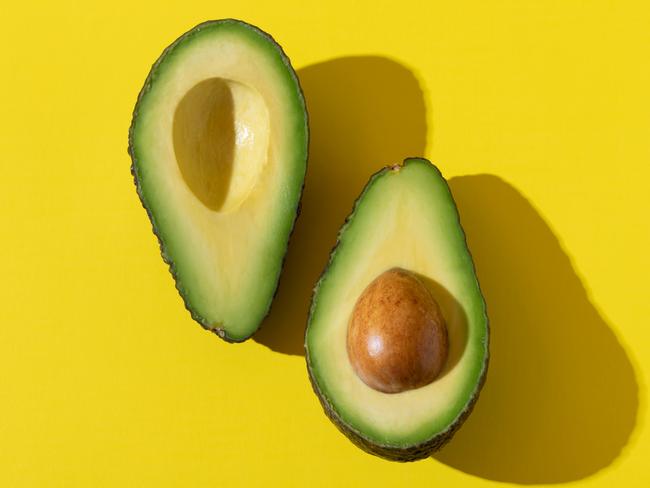
Rich in heart-friendly monounsaturated fats, its creamy texture is perfect on sambos instead of mayo or butter. Also a good source of vitamins E, folate and B6.
B. Broccoli
C. Chia seeds
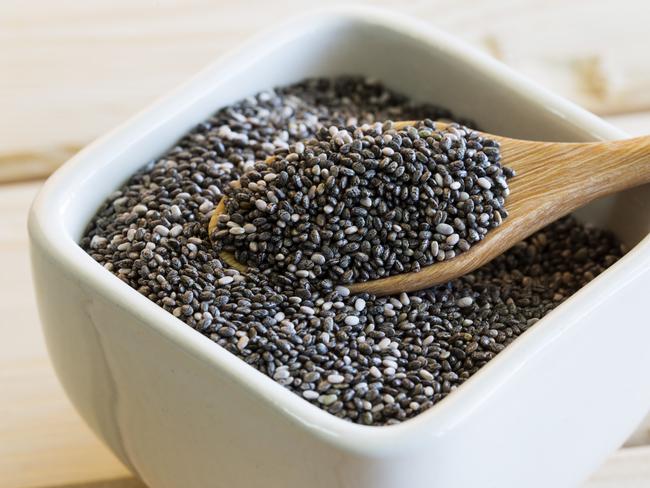
These tiny seeds pack a big health punch, rich in calcium and zinc with valuable soluble dietary fibre and protein, plus omega-3 fatty acids.
D. Dukkah
Make your own from dry roasted spices and seeds, including cumin, coriander and sesame and freshly ground black pepper. A great flavour substitute for salt and ideal when mixed with extra virgin olive oil as a healthy dip for bread.
E. Edamame
Edamame (young soy beans) have a delicious nutty taste and are packed with dietary fibre, which helps to establish healthy microbes in the large intestine. They’re also great for vegetarians as they have high quality protein and provide iron as well as some healthy unsaturated fatty acids.
F. Freekeh
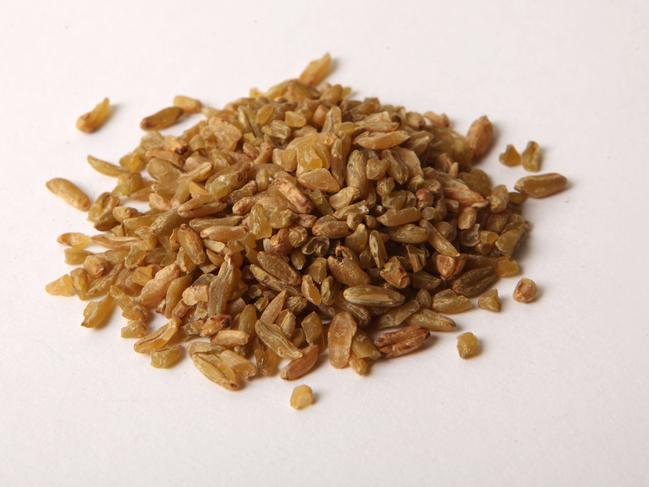
This ‘ancient grain’ with a nutty flavour is made by roasting young green wheat. It’s a good source of protein and dietary fibre as well as manganese and calcium, both of benefit to healthy bones.
G. Goji berries
These little red berries are sometimes called wolfberries. They are loaded with beta carotene, which the body converts to vitamin A, and also have some antioxidants that are linked to eye health. Add their tart sweetness to salads and desserts.
H. Hummus
In a food processor or grinder, combine chickpeas (canned are fine), tahini, garlic and lemon juice for a great dip or spread complete with protein, dietary fibre, iron, calcium and some valuable B vitamins.
I. Italian red onions
Along with blueberries and blackberries, these onions are darker in colour than white onions due to containing anthocyanin pigments, plant compounds linked to many health benefits including being protective against several chronic diseases.
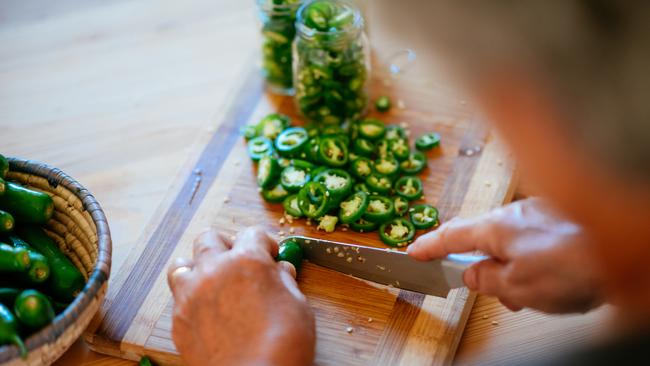
J. Jalapeños
All chillies are high in vitamin C and several valuable carotenoids, so of which the body converts to vitamin A. Their capsaicin produces loads of flavour as well as a burning sensations, which some people find helps them avoid overeating.
K. Kale
An excellent source of vitamin C and betacarotene, which is converted to vitamin A and important for eye health. To soften its texture, use your fingers to massage it with a teaspoon of olive oil. It can then be eaten raw or cooked.
L. Lentils
One of the stars among healthy plant foods, lentils are packed with protein and dietary fibre and also provide iron, folate, zinc and magnesium. Best of all, they come in many varieties (black, green and red), can be cooked quite quickly and need no prior soaking.
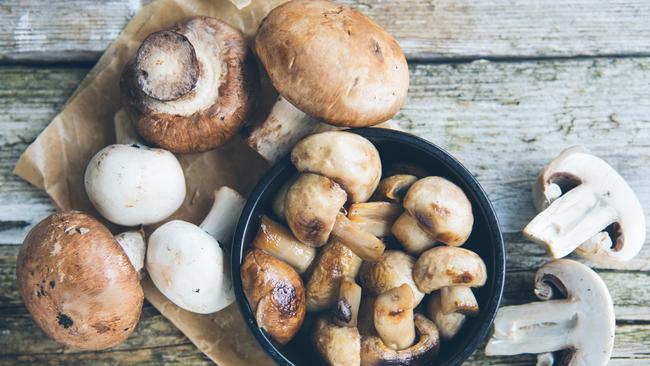
M. Mushrooms
Mushrooms are a dieter’s friend with loads of flavour and few kilojoules. Nutritionally, they’re a source of 5 different B vitamins as well as potassium. Keep an eye out for mushroom labels showing some have been exposed to ultra violet light and are thus a valuable source of vitamin D.
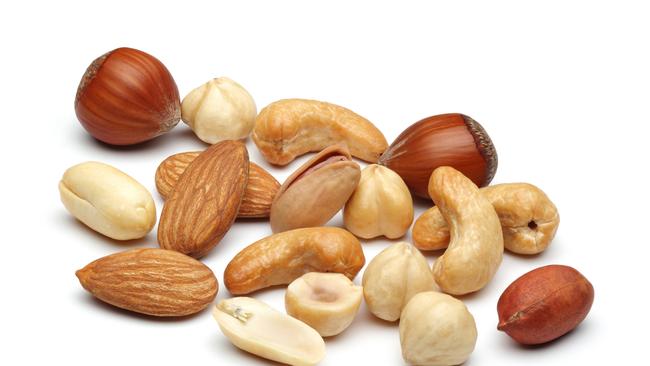
N. Nuts
Nuts are among the most valuable of the healthy plant foods. With the exception of coconut, they’re a rich source of protein, healthy fats and dietary fibre. Almonds add calcium and Brazil nuts are the world’s richest source of selenium. Studies also show eating a few nuts helps you curtail overall kilojoule intake.
O. Oats
Thank the Scots for promoting porridge, a fibre-filled food. Oats keep us feeling fuller for longer and regulate blood sugar levels. They’re also great for vitamin E, iron, zinc, and several B vitamins.
P. Pepitas
Like all seeds, pepitas (pumpkin seeds), are nutrient powerhouses. They’re packed with healthy fatty acids, and add magnesium, zinc, iron and a heap of healthy protective flavonoids.
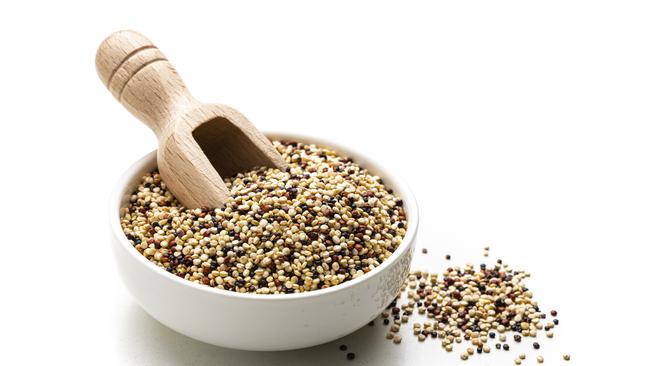
Q. Quinoa
It’s not a true grain, but quinoa is a good source of protein, dietary fibre, zinc, iron, manganese and magnesium. It’s also gluten-free, easy to cook and suitable for any of the day’s three meals.
R. Raspberries
Delicately delicious, raspberries are a surprisingly good source of dietary fibre. They’re also rich in vitamin C and can be enjoyed fresh or frozen.
S. Salmon
One of the best sources of valuable omega-3 fatty acids and also a top source of protein. As a bonus, salmon is one of the few foods that can be described as a good source of vitamin D. It is linked to a reduced risk of heart disease, stroke, macular degeneration and dementia.
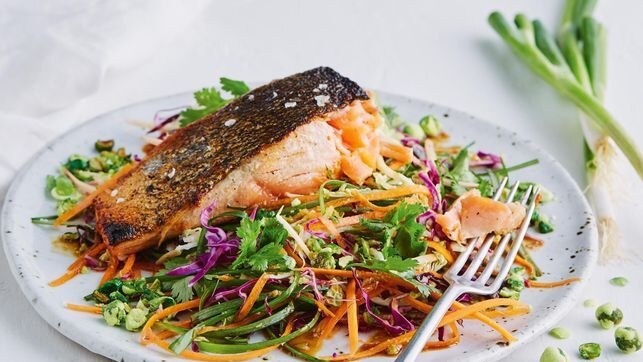
T. Tomatoes
Tomatoes contain lycopene, one of the carotenoids that acts as a powerful antioxidant. They’re also a good source of vitamin C, folate and potassium.
U. Uncooked veg
Eating vegies raw means you avoid losing the water-soluble vitamins of the B complex and also vitamin C nutrients that are reduced during cooking. Aim for 2-3 serves (out of 5) per day.
V. Vinegar
Various types of vinegar add flavour to foods and salad dressings. Vinegars are made from fruits (grapes and apples), grains, potatoes or rice. They have no kilojoules and are useful in marinades and salad dressings. If taken neat, the acidity of vinegar can damage tooth enamel so always consume with a glass of plain water.
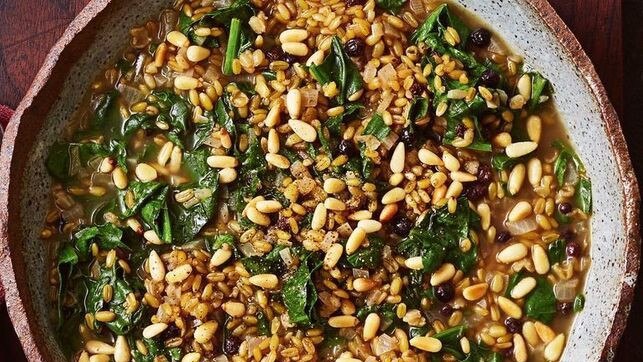
W. Wholegrains
Wholegrains provide dietary fibre, protein, vitamins B and E and a range of minerals. Dietary guidelines recommend choosing them over refined grain products not only for their nutrients, but wholegrains are digested more slowly, resulting in lower blood glucose levels. The range includes whole-wheat breads and pasta; brown, red or black rice; cracked wheat (bulgur), farro and freekeh; oats; whole rye, barley and millet.
X. Xigua
Also known as watermelon, the popular summer fruit is a good source of antioxidants and nutrients, including vitamins A and C. It also contains potassium as well as pectin, a type of soluble fibre which supports healthy blood cholesterol levels. In traditional Chinese Medicine, xigua is described as clearing heat and regulating water in the body.
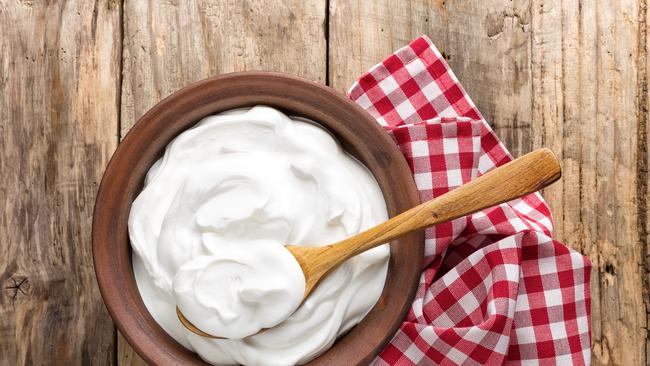
Y. Yoghurt
A top source of calcium and protein, yoghurt also contains natural probiotics, which help with good bacteria in the large intestine. Go for natural or Greek yoghurt. It can usually be used to replace sour cream.
Z. Zucchini
Delicious raw, steamed or roasted, zucchini has few kilojoules. It is a source of vitamin C, beta carotene, folate and potassium. Try halving zucchini lengthwise, brush lightly with olive oil and cook on the barbecue.
More Coverage
Originally published as How a mum of two gets her kids to eat their veg





